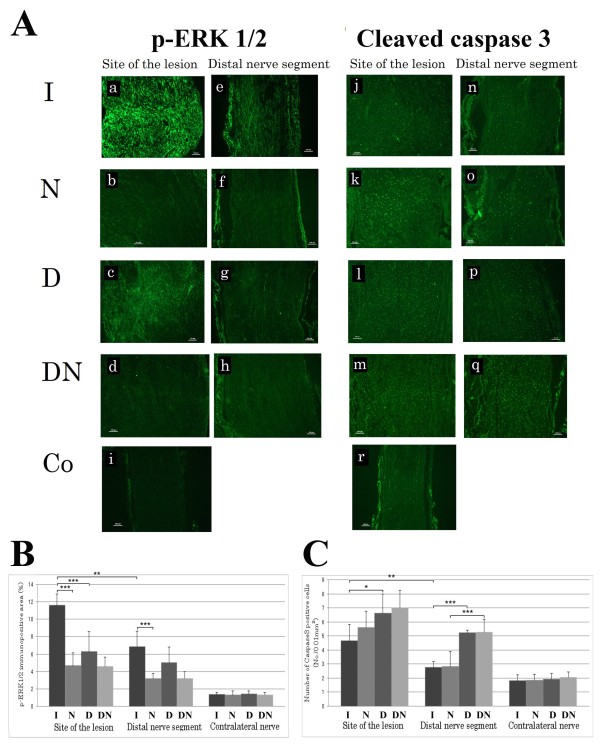Figure 1.
Results of immunocytochemical staining for ERK1/2 and cleaved caspase 3 analyzed in the distal nerve segment after immediate, delayed and no nerve repairs. Immunocytochemical staining for p-ERK1/2 (A) in longitudinal sections at the site of the lesion (a)-(d) [(a) group I (immediate repair), (b) group N (no repair), (c) group D (delayed repair), (d) group DN (delayed no repair)], and in the distal nerve segment (e)-(h) [(e) group I, (f) group N, (g) group D, (h) group DN]. Contralateral uninjured nerve is shown in (i). The scale bar represents 100 μm. The graphs show the percentages of immunopositive area for p-ERK1/2 (B) expressed as mean + SD. The stars indicate p-values * < 0.05: ** < 0.01; *** < 0.001. Immunocytochemical staining for cleaved caspase 3 (A) in longitudinal sections at the site of the lesion (j)-(m) [(j) group I, (k) group N, (l) group D, (m) group DN], and in the corresponding distal nerve segment (n)-(q) [(n) group I, (o) group N, (p) group D, (q) group DN]. Contralateral uninjured nerve is shown in (r). The scale bar represents 100 μm. The graphs in (B) show the number of the caspase 3 positive cells per 0.01 mm2 expressed as mean + SD. The stars indicate p-values * < 0.05: ** < 0.01; *** < 0.001.

